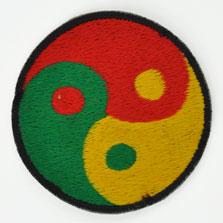The Origins of the Rastafari
The religious & political Rastafari movement began in the slums of Jamaica in the 1920s and 30s, through the teachings of Marcus Garvey, a black Jamaican who led the “Back to Africa” movement. He believed that Africans are the true children of God, and had been exiled to Jamaica and other parts of the world as divine punishment. He encouraged pride in being black and worked to reverse the sense of inferiority and oppression that many people felt in these times of great poverty, racism, and class discrimination.
Followers of Garvey’s teachings believed Emperor of Ethiopia Haile Selassie to be the messiah that had been predicted in the bible, and his coronation in 1930 to mean that the divine punishment was completed and the return to Africa (the “Promised Land”) would begin. As they sought the promised land, they also resisted the oppression of “Babylon”: the capitalistic, materialistic, and oppressive world.
The Rasta movement first became visible in the slums of Kingston in the 1930s, with many peaceful communities springing up in which the people were developing a unique style of language, hairstyle, art, and music. The most famous Rastafarian is probably the singer Bob Marley, whose lyrics and celebrity brought awareness of the Jamaican movement to the international stage.
Some Rastafarians see Rasta as a life philosophy, while others see it as a religion. Uniting all Rastas, however, is belief in the divinity of Haile Selassie, resistance to oppression, and pride in African heritage. The Rasta lifestyle usually includes vegetarianism, wearing one’s hair in dreadlocks, avoidance of alcohol, and ritual use of marijuana.
The Significance of Rasta Colors

The colors of red, gold, and green each have a special spiritual significance for the Rastafari. Originally these colors were on the Ethiopian flag, which the Rastas adopted to show their loyalty to Ethiopian Emperor Selassie, Ethiopia, and Africa. Marcus Garvey’s “Pan-Africa Unity” flag incorporated these colors along with black, to also represent the color of the Africans.
Red represents the blood of the martyrs in the black struggle for liberation, which bleeds to the earth and replenishes the land, helping to grow plants. Gold stands for the abundant natural wealth of their homeland Africa, and also the sun, which gives strength to all. Green symbolizes the beauty and lush vegetation of Africa.
Dread Locks

One of the most visible symbols of Rasta culture is the wearing of one’s hair in dreadlocks. Rastas keep their hair this way for a variety of reasons. One reason is because of the biblical commandment to not cut one’s hair (Leviticus 21:5). Dreadlocks are also representative of the lion’s mane, which symbolizes strength, Ethiopia, Africa, and the Lion of Judah. This hair style also celebrates naturalness and simplicity, which are organic qualities symbolic to the Rastas of Africa.
Rastas also consider cultivating their dreadlocks to be a spiritual and mental journey that teaches patience. It is believed to be through patience that not combing, cutting, or washing with anything other than clean and natural water ultimately creates the admirable Lion’s mane of dreads.
Lion of Judah
The Lion of Judah comes originally from the book of Genesis in the bible. In Christianity, the lion is considered representative of Jesus Christ. In Judaism, the lion represents the Tribe of Judah. In Rastafari, Haile Selassie is revered as both Jah (God) , the reincarnation of Christ, and the Lion mentioned in the book of Revelations. The Lion of Judah represents for all of these cultures strength, courage, alertness, and pride in one’s heritage.
You don’t have to be a Rastafarian to have dreadlocks or wear the Rasta colors, but it is good to know the historical importance and meaning of our fashion choices. When we wear Rasta colors or styles, we do so in the spirit of equality and love for our planet and ALL the people on it!

